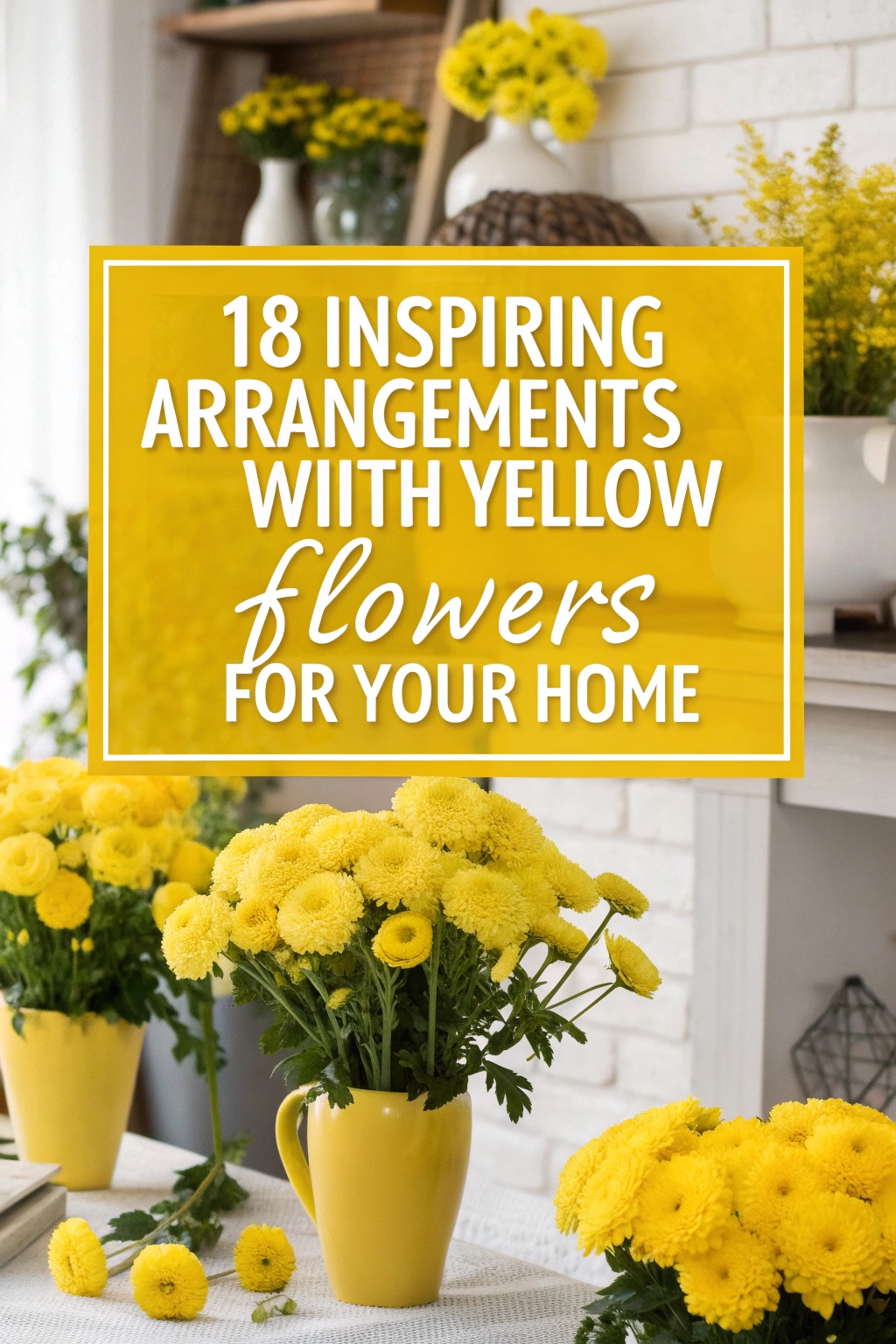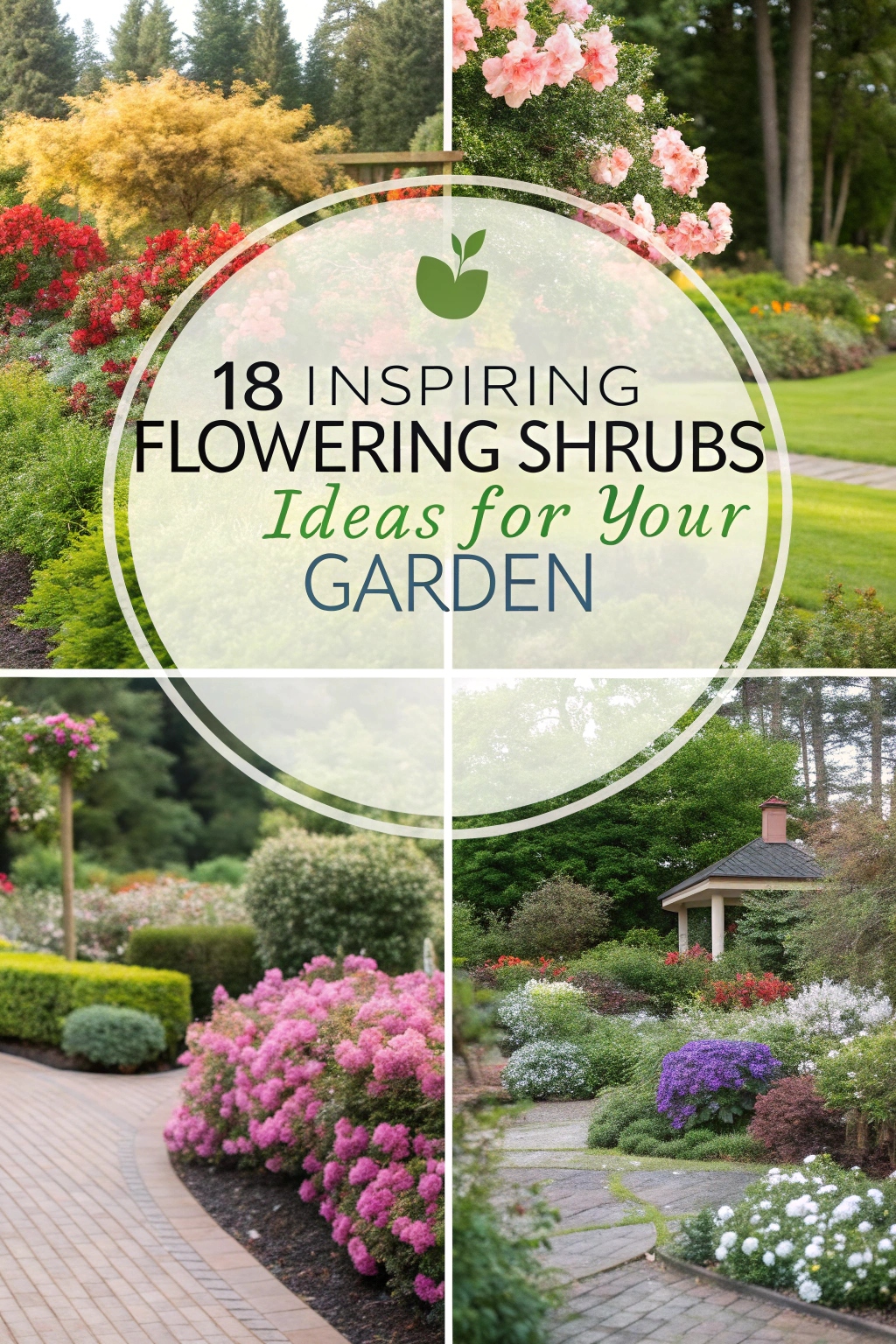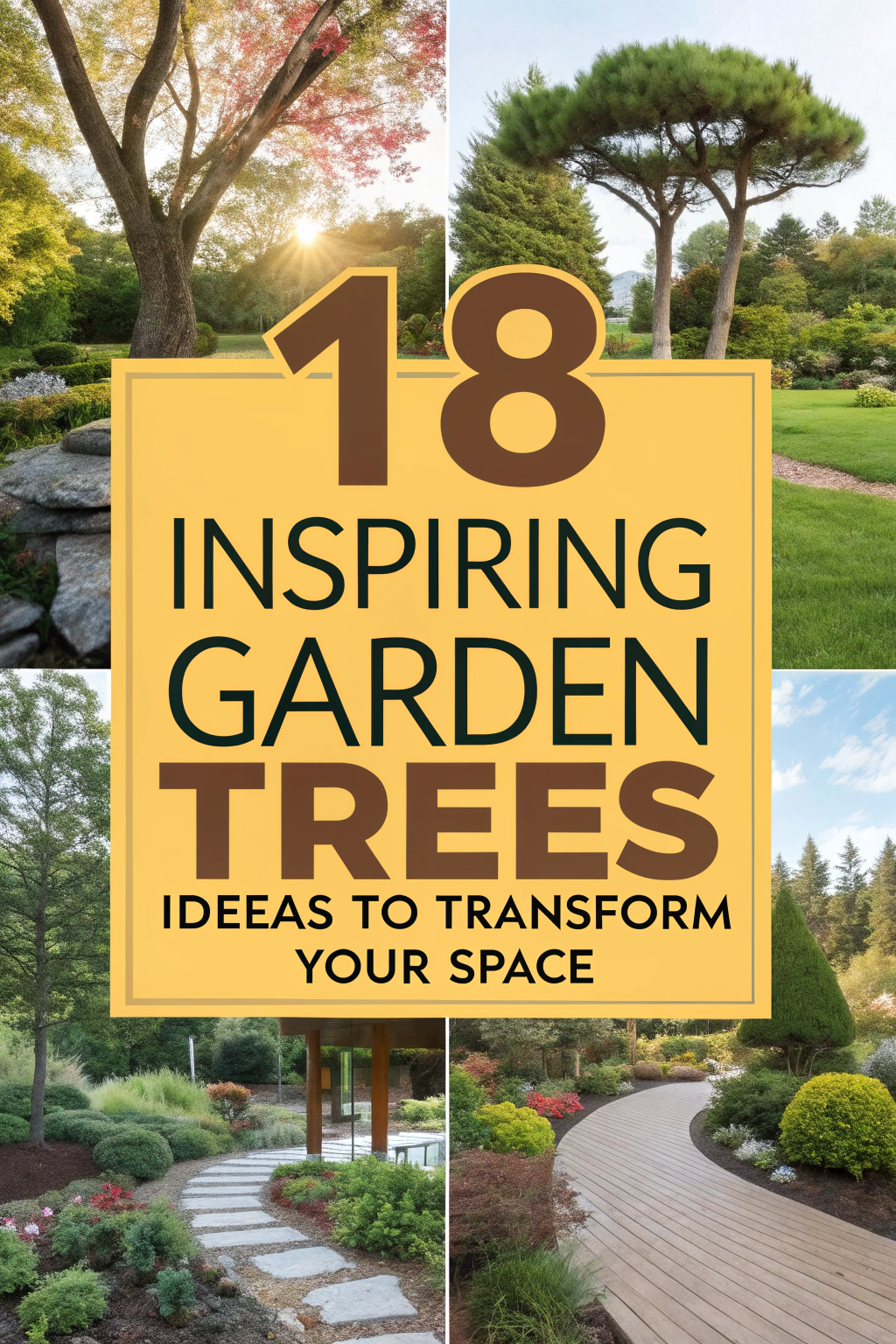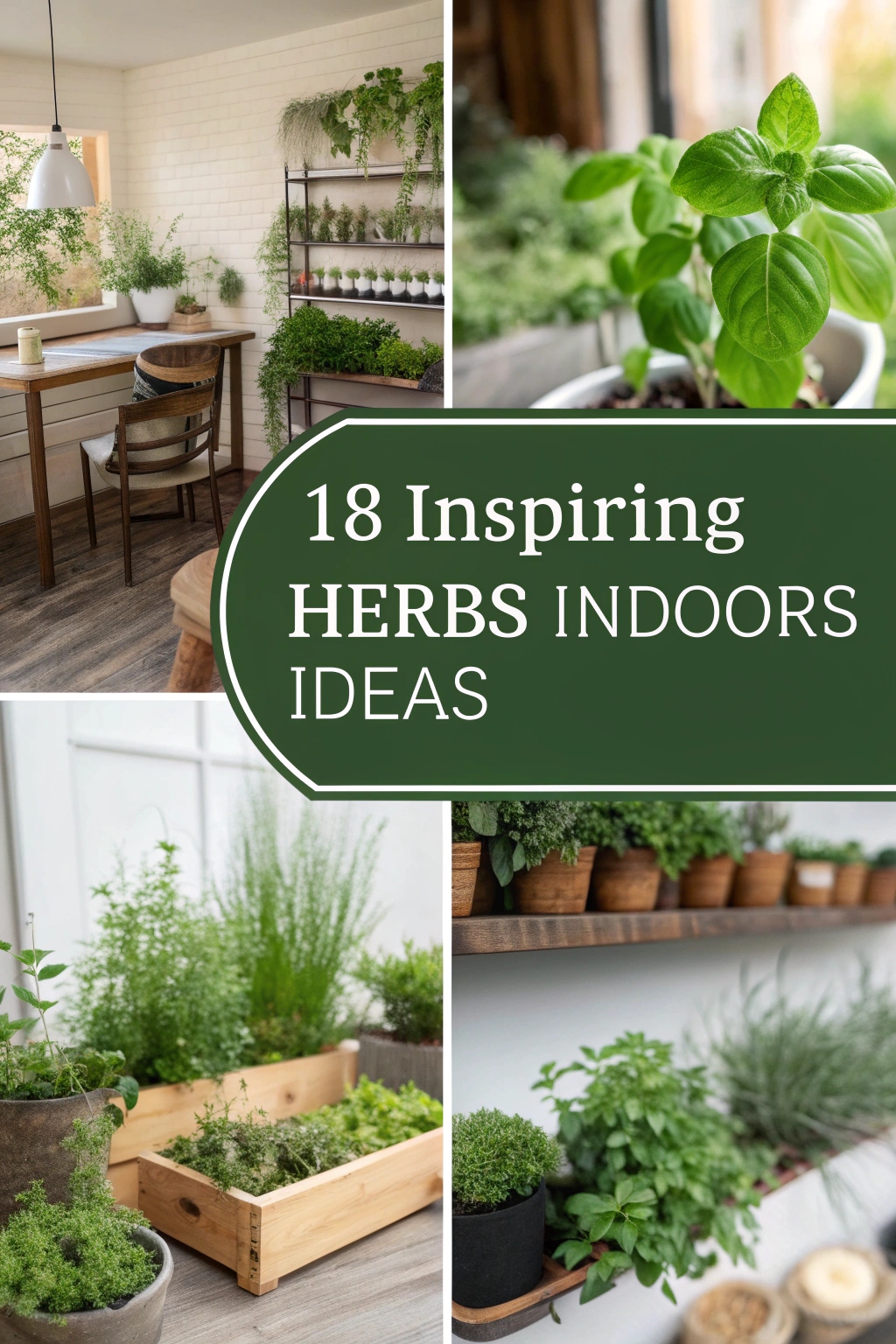17 Garden Ideas for Hillside That Will Inspire You

If you’ve got a hillside in your yard, you’ve got a canvas full of potential. Imagine transforming that sloped space into a vibrant garden that’s both functional and beautiful. With ideas like terraced vegetable patches and fragrant lavender slopes, you can cultivate a sanctuary that thrives. Not only can these designs enhance your landscape, but they also promote sustainability. So, what creative solutions can you implement to make your hillside something truly special?
Terraced Vegetable Gardens

Terraced vegetable gardens are an excellent solution for hillside landscapes, allowing you to maximize space while minimizing soil erosion. By creating flat, leveled plots on the slope, you can grow a variety of vegetables in well-defined sections. This layout not only enhances accessibility for planting and harvesting but also improves drainage and sunlight exposure. Incorporating retaining walls made from stone or timber can further stabilize the terraces, making them a sustainable and productive addition to your hillside garden.
Flowering Memorial Steps

Flowering memorial steps are a beautiful way to honor loved ones while adding charm and character to a hillside garden. These steps, adorned with vibrant flowers, create a serene and inviting pathway that accentuates the natural landscape. By incorporating various perennial blooms, such as daisies, lavender, or petunias, you can create an ever-changing display of color throughout the seasons. Personal touches, like engraved stones or decorative planters, enhance the memorial aspect, making it a peaceful retreat for reflection and remembrance.
Rock Gardens With Succulents

Rock gardens with succulents are perfect for hillside landscaping, offering a low-maintenance and visually striking option. By incorporating various rocks and boulders, you can create a naturalistic setting that mimics a desert environment. Succulents thrive in well-drained soil, making them ideal for sloped areas where water drainage can be a challenge. Choose a mix of colors and textures, such as agaves, sedums, and echeverias, to create an eye-catching display that enhances the rustic charm of your hillside garden.
Cozy Fire Pit Zones
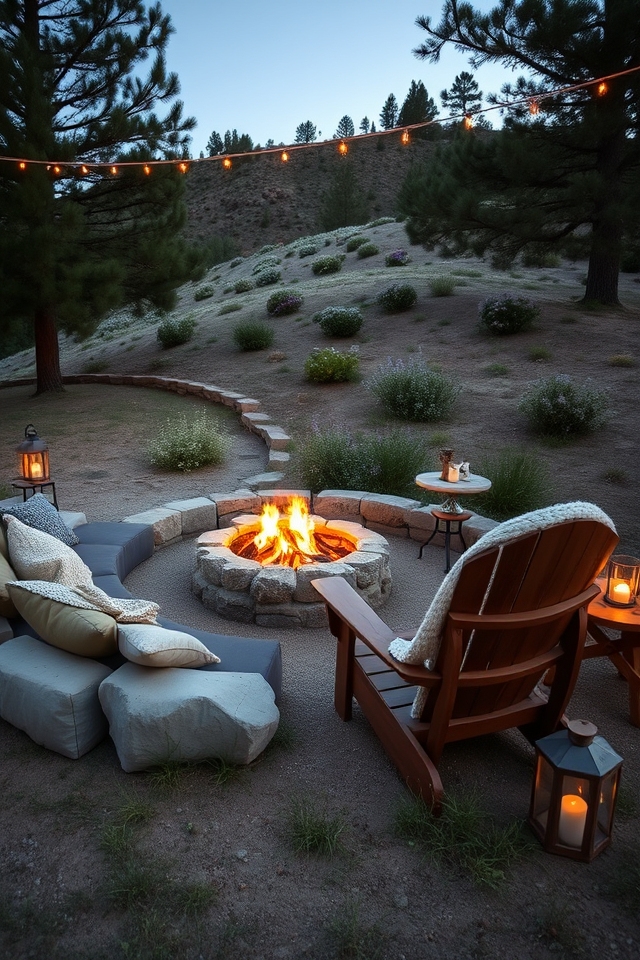
Creating a cozy fire pit zone on a hillside is a perfect way to maximize your outdoor space while enjoying the stunning views. Start by selecting a flat area for the fire pit to guarantee safety and stability. Surround it with comfortable seating options like benches or Adirondack chairs, and add soft lighting such as lanterns or string lights for ambiance. Incorporate natural stone or gravel to blend with the hillside, and don’t forget to plant some low-maintenance greenery around the area for added charm.
Native Plant Reserves
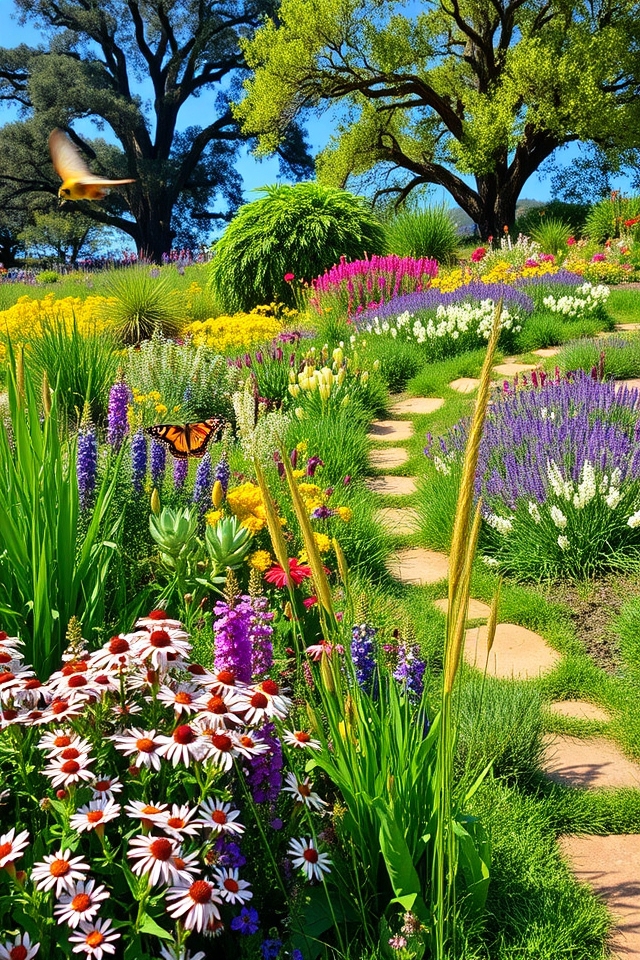
Creating native plant reserves on hillside gardens can enhance biodiversity while ensuring that the landscape remains sustainable and low-maintenance. Native plants are adapted to the local climate and soil conditions, making them more resistant to pests and diseases. They provide essential habitats for local wildlife and pollinators, such as bees and butterflies. Incorporating these plants into hillside areas can also help with erosion control, stabilizing soil with their deep-root systems while creating a beautiful and natural aesthetic.
Seating Areas With a View

Seating areas on a hillside garden can transform your outdoor space into a serene retreat. Strategically placed benches, hammocks, or patio chairs can create inviting spots that overlook the stunning landscape below. Opt for materials that blend with nature, such as wood or stone, and consider incorporating pergolas or shade sails for added comfort. Enhancing these spaces with lush plants and soft lighting can elevate the ambiance, making it an ideal spot for relaxation or entertaining guests.
Water Features and Ponds

Water features and ponds can enhance hillside gardens by adding tranquility and visual interest. A cascading waterfall can beautifully integrate with the natural slope, while a small pond can serve as a focal point, attracting wildlife and providing a serene atmosphere. Consider using natural stones and native plants to create a cohesive look that blends with the surrounding landscape. These elements not only provide aesthetic appeal but also help with irrigation and drainage on steeper terrain.
Edible Landscapes
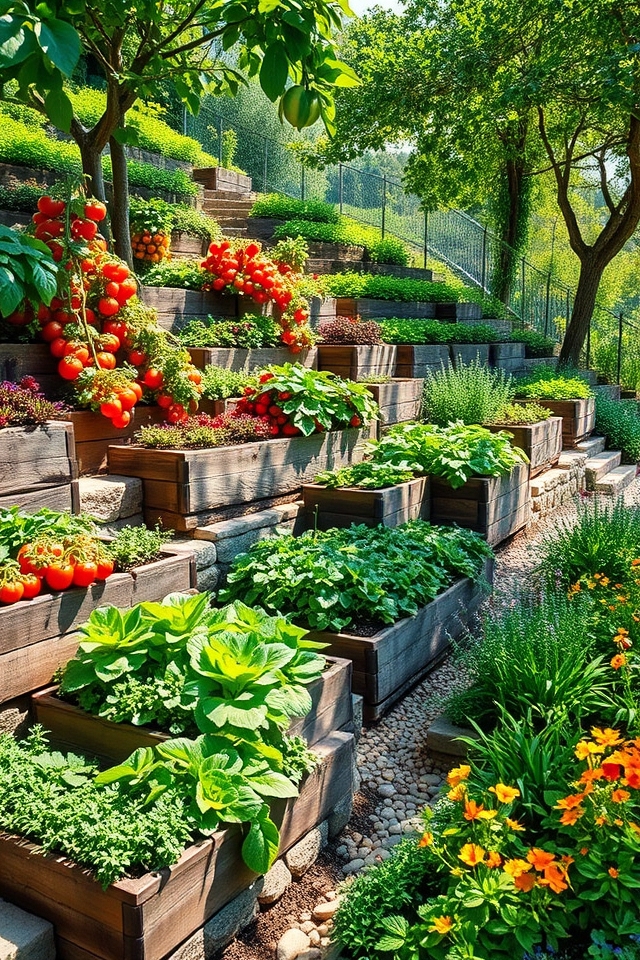
Creating an edible landscape on a hillside can transform your garden into a beautiful and productive space. Incorporate terraced beds for easy access and to manage soil erosion, while growing a variety of fruits, vegetables, and herbs. Consider planting deep-rooted crops like tomatoes and peppers alongside shallow-rooted options such as lettuce and strawberries. Use edible ground covers and flowering herbs to attract pollinators, enhancing both aesthetics and biodiversity in your hillside garden.
Pathways With Stone Borders
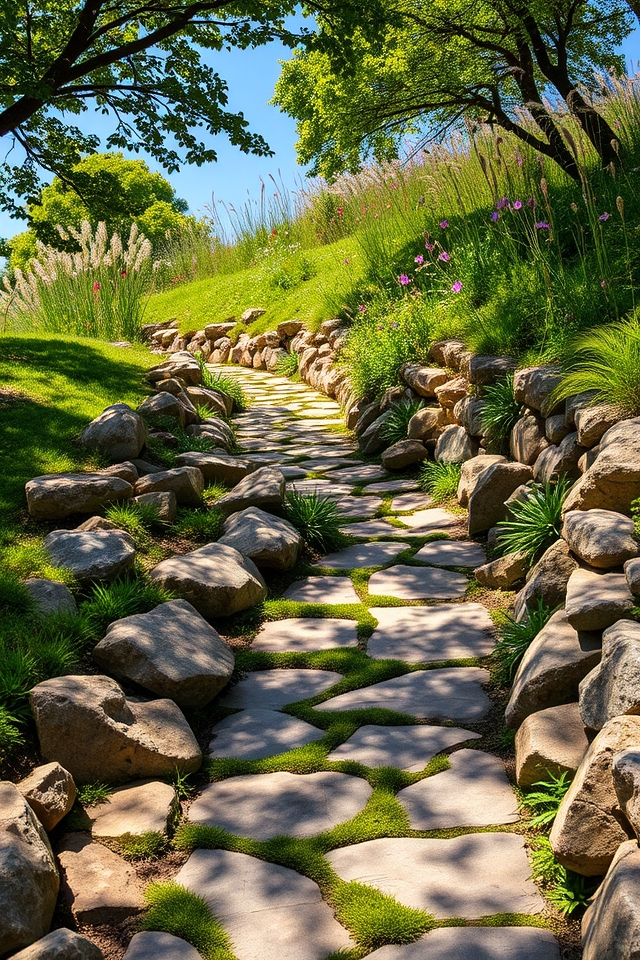
Creating pathways with stone borders on a hillside garden adds both functionality and aesthetic appeal. These pathways guide visitors through the terrain while preventing soil erosion and keeping plants intact. The natural texture of the stones complements the surrounding greenery, allowing the pathway to blend seamlessly with the landscape. Choose stones that vary in size and color to create visual interest, and consider adding ground cover plants between the stones for a soft, inviting look.
Vertical Gardening Solutions
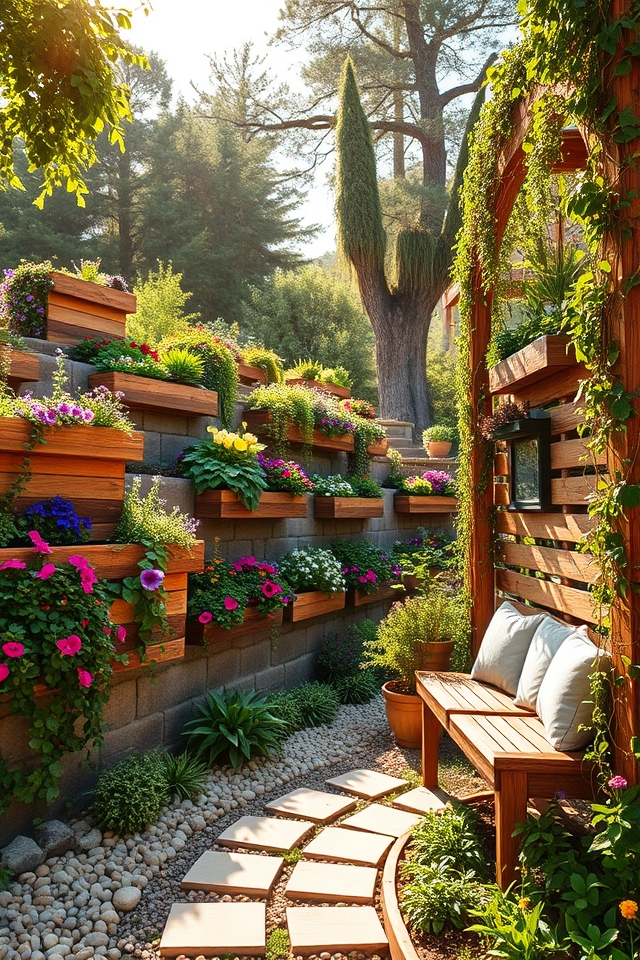
Vertical gardening solutions are perfect for hillside spaces, maximizing limited ground area while adding visual interest. By utilizing trellises, wall planters, and tiered garden beds, you can cultivate a variety of plants that cascade beautifully. These structures not only help manage soil erosion but also create microclimates that can benefit delicate plants. Incorporating vertical gardens into hillside landscapes enhances accessibility and provides a striking focal point in your outdoor design.
Shade Gardens With Ferns

Shade gardens on hillsides can thrive with the incorporation of ferns, which are perfect for low-light conditions. Their lush greenery and varied textures add depth to the landscape, while their ability to grow in moist, acidic soil makes them ideal for shaded areas. Consider planting varieties like ostrich ferns or Japanese painted ferns to create a lush, vibrant backdrop. Paired with shade-tolerant flowers, such as hostas or astilbes, these ferns can create a serene and inviting garden space.
Pollinator-Friendly Gardens
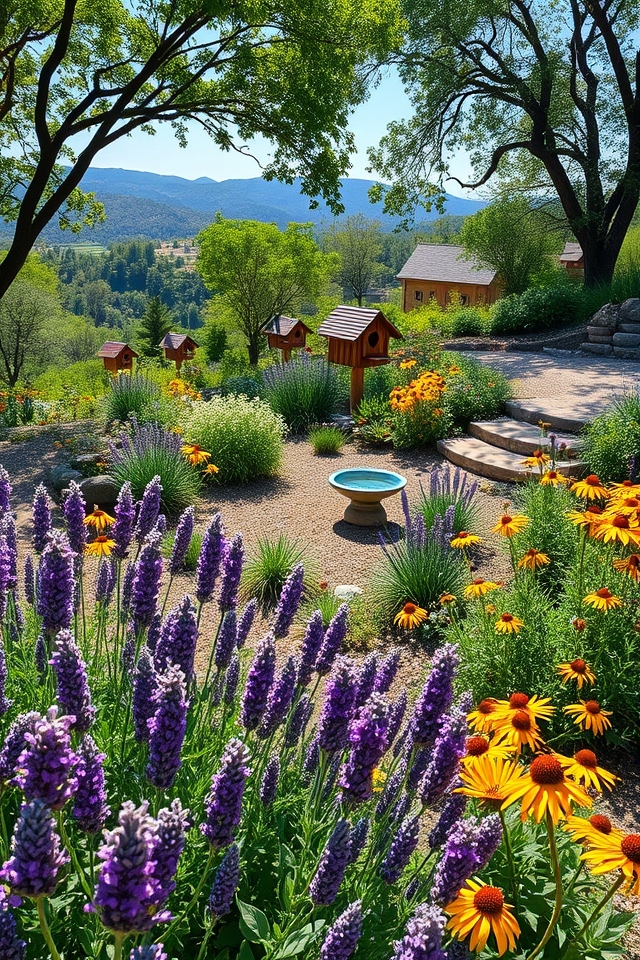
Pollinator-friendly gardens on hillsides are a vibrant and sustainable way to support local ecosystems. By incorporating native flowering plants such as milkweed, lavender, and coneflowers, you can attract bees, butterflies, and other pollinators. Utilize the natural slope of the hillside to create tiered planting, allowing for better drainage and sun exposure. Adding water sources and shelter, like bee hotels or birdhouses, can further enhance the habitat, promoting biodiversity while beautifying your landscape.
Colorful Herb Spirals
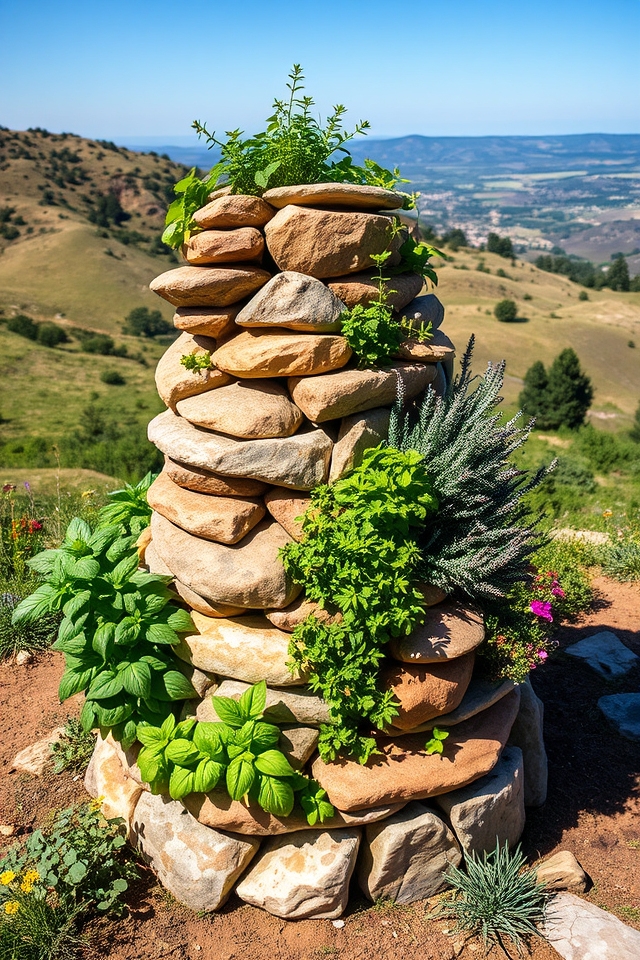
Colorful herb spirals are an innovative and visually appealing way to maximize space on a hillside garden. This vertical gardening technique involves stacking stones or bricks into a spiral shape, creating distinct growing zones for various herbs. The design not only adds a splash of color with vibrant plants but also promotes excellent drainage and sun exposure. By incorporating a variety of herbs, such as basil, thyme, and cilantro, you can enjoy both aesthetics and fresh flavors in your culinary endeavors.
Rustic Staircases With Planters
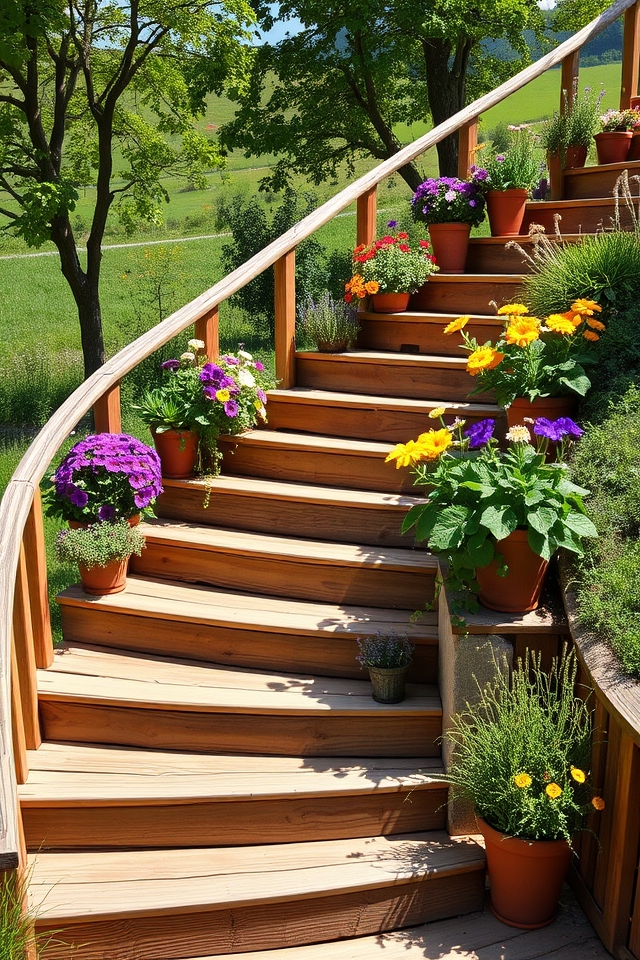
Rustic staircases with planters seamlessly blend functionality and aesthetic appeal in hillside gardens. Constructed from natural materials like wood or stone, these staircases offer a charming, rugged look while providing easy access to different garden levels. Planters can be integrated along each step or at the base, showcasing vibrant flowers, greenery, or herbs that soften the edges and enhance the landscape. This combination creates a warm and inviting atmosphere, perfect for enjoying nature’s beauty.
Fragrant Lavender Slopes
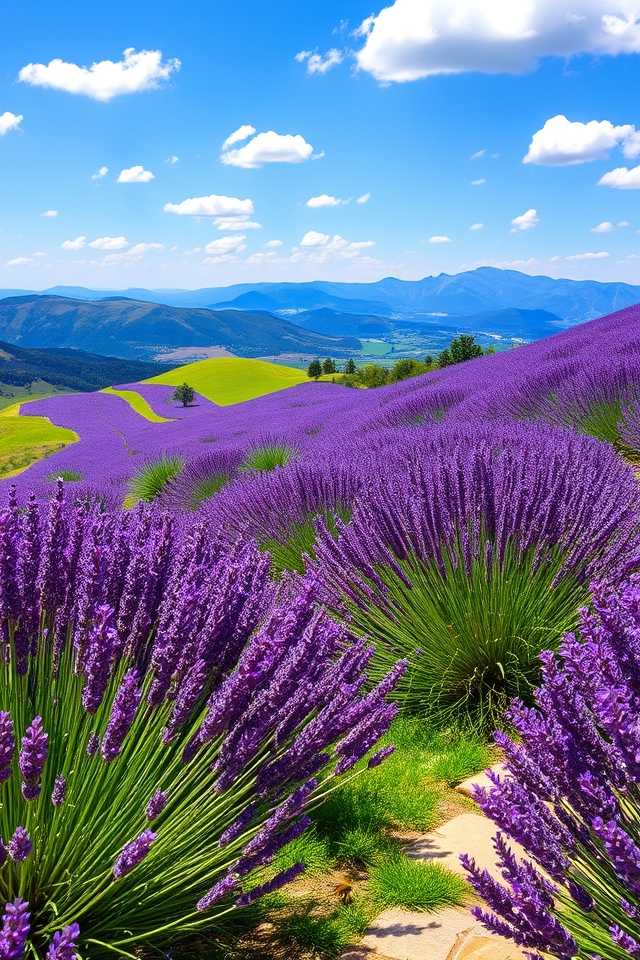
Fragrant lavender slopes create a stunning and aromatic landscape for hillside gardens. Planting lavender in cascading rows not only enhances the visual appeal with its vibrant purple hues but also offers a delightful scent that attracts pollinators like bees and butterflies. The drought-resistant nature of lavender makes it ideal for sloped terrains, requiring minimal maintenance while providing erosion control. Pair it with ornamental grasses or low-growing perennials for a harmonious, textured garden that thrives in sunny, well-drained locations.
Fruit Tree Alleys

Creating fruit tree alleys on a hillside can transform the landscape while providing delicious produce. By strategically planting rows of fruit trees, you can take advantage of the natural slope to enhance drainage and sunlight exposure. Choose varieties that thrive in your climate, such as apples, peaches, or citrus. Incorporating pathways between the trees allows easy access for harvesting and maintenance, creating a charming and productive garden space that celebrates both aesthetics and sustainability.
Thrift and Low-Maintenance Gardens
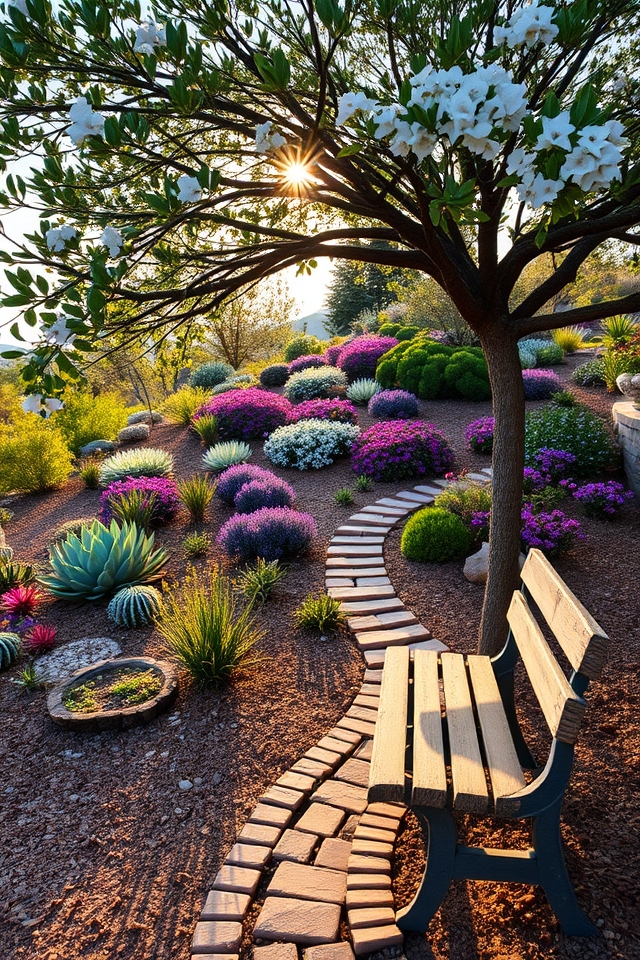
Creating a thrift and low-maintenance garden on a hillside can be both economical and environmentally friendly. Opt for drought-resistant plants, such as succulents and native perennials, that require minimal care. Utilize mulch to suppress weeds and retain moisture, reducing the need for frequent watering. Consider using repurposed materials, like old bricks or stones, for pathways or retaining walls. This approach not only conserves resources but also enhances the natural beauty of your hillside garden.
